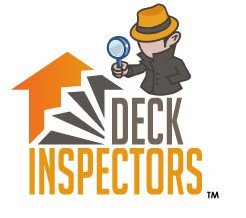Why Elevated Balconies Demand More Than Just a Visual Check

In Southern California, elevated balconies are a common feature in residential properties, ranging from luxury apartments to townhomes and condo complexes. While they provide aesthetic appeal and outdoor living space, they also come with serious structural responsibilities. A quick visual glance isn’t enough to assess their true condition. To ensure safety and compliance, a thorough professional inspection is critical. Whether you’re a property manager, HOA board member, or multifamily property owner, understanding the risks associated with an Elevated Balcony can help you take proactive steps to avoid liability, costly repairs, or even catastrophic failure. The Hidden Dangers of Elevated Balcony Structures The most serious risks associated with an Elevated Balcony are often hidden from plain sight. While some issues, such as surface cracks or water pooling, may seem minor, they can be signs of deeper structural damage. Water intrusion is particularly problematic, as it can seep into the support structure, leading to rot, mold, or corrosion that weakens the balcony over time. In many cases, the framing and critical connection points are concealed behind stucco, siding, or other finishes, making it difficult to assess their condition without the right tools and training. A balcony may appear solid on the outside, while its internal components are slowly deteriorating. Moreover, without proper inspection, property owners may fail to comply with California’s SB 326 and SB 721, which mandate routine inspections of exterior elevated elements in multifamily dwellings. Failing to meet these requirements can result in fines, legal liability, or denied insurance claims in the event of a failure. Warning Signs to Watch For While only a qualified professional can accurately assess the condition of an elevated balcony, there are several red flags that property managers and HOA boards should keep on their radar: Visible cracks or spalling in the concrete or stucco surface Soft or spongy spots on the flooring that may indicate rot beneath the surface Rust stains near fasteners or railing attachments—signs of corrosion Loose or wobbly railings, which can signal failing anchor points Signs of water damage, such as staining, mold, or peeling paint, underneath the balcony Gaps between the balcony and the building, which may indicate shifting or settling If any of these warning signs are present, it’s crucial to schedule a professional inspection immediately. Even if the balcony appears structurally sound, unseen damage could be compromising its safety. Elevated Balcony Conclusion An Elevated Balcony is a load-bearing structure that requires careful maintenance. Relying solely on a visual check can put residents at risk and expose property managers to serious liability. Regular professional inspections, particularly by California building codes, are the most effective way to ensure long-term safety and prevent costly emergencies. Click here to get in contact with an expert from Deck Inspectors today! Deck Inspectors for Southern California is happy to offer our services in Los Angeles County, Riverside County, Orange County as well as San Diego County and all Southern California surrounding areas like: Los Angeles, Irvine, Long Beach, La Jolla, Glendale, Pasadena, Santa Ana, Huntington Beach, Dana Point, Burbank, Santa Monica, Anaheim, Temecula, Encinitas, Chula Vista, Vista, Mesa, San Diego, Oceanside, Escondido, Carlsbad, Poway, Mission Viejo, and El Cajon.
